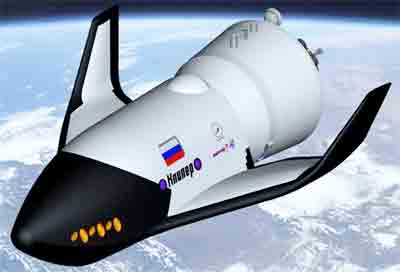 The US will soon be retiring their space shuttles to replace them with a new vehicle, scheduled for 2013. Until then, the Americans will be riding on Russian Soyuz capsules. But the Soyuz itself, a 40 year old technology with many modernizations, is on its way out, to be replaced with bigger better platforms.
The US will soon be retiring their space shuttles to replace them with a new vehicle, scheduled for 2013. Until then, the Americans will be riding on Russian Soyuz capsules. But the Soyuz itself, a 40 year old technology with many modernizations, is on its way out, to be replaced with bigger better platforms.
The replacement for the will be the Kliper, a ship carrying 6 crew and a half ton of cargo. It is scheduled to fly its maiden voyage some time in 2010. The ship is about twice the size of the Soyuz and will require much larger rockets, most likely the Zenit class of booster rockets, in order to make orbit. It will return to earth by extending wings and gliding down, for a soft landing.
Interestingly enough, if things go according to plant, the new, larger Kliper, will actually save money. The present Soyuz missions run between $20 to $30 million each (compared to the American space shuttles at around $300 million each). Kliper flights are supposed to move more equipment and people for less money, but even it the costs stay the same, with more room on the ship, there will be room for more space tourists and at $20 million per pop, the ships will earn a profit, with just one added passenger.
Development of the Kliper is also priced at the low cost of $1 billion, compare that to the $10 billion for the American Crew Exploration Vehicle (CEV), which is still on the drawing board.
But the Kliper is only the first modern step in a new plan by the Russian space agency to conquer the inner sphere of our solar system. Next on the development board is a manned spacecraft powered by a nuclear electric engine. For decades, Russia and the Soviet Union have developed nuclear powered satellites, which did not have to rely upon easily damaged solar arrays, for power. Of course those put out only kilowatts of power, while this ships engines will have to run on the megawatt range.
The ship’s design is scheduled to be complete by 2012 and a finished by 2021, at an estimated cost of 17 billion rubles, or $580 million. More realistic estimates put the price tag at $1 to $1.5 billion, over the next decade.
Leave a comment